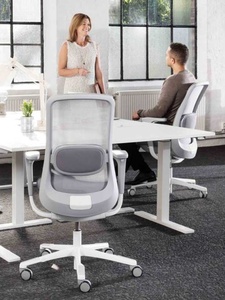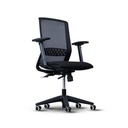So, you've encountered back pain from your office chair, decided to buy an expensive ergonomic chair, hoping it will solve your problem. However, a few weeks in and your back pain hasn't eased up. In fact, it's gotten worse! How could this be? Why is your ergonomic chair so uncomfortable?
This is one of the most common complaints we get from new customers! While it could be any number of reasons, we find that that in the majority of cases, the answer is actually really simple.
The person has never been shown how to set up their chair properly!
Let's dive into how you can fix this yourself!
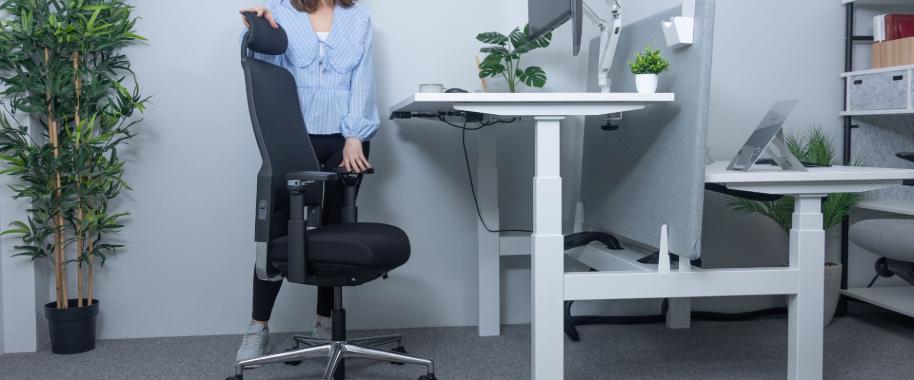
Why Are Ergonomic Chairs So Uncomfortable?
Did you know that the average office worker will spend over 1300 hours per year sitting at their desk?
33%+
The average office worker will spend over 33% of their waking work life sitting in their office chair
Considering then the typical number of years a person will spend in the work force, it’s clear that a significant portion of our lives is spent sitting down. It is no wonder then that lower back pain is the most common cause of work-related disability, and one of the leading causes of disability around the world.
As an office worker, it’s understandable then to question why more emphasis is not put on making office chairs more comfortable and supportive when they are used so frequently.
The truth is that the chair is often suitable, but it has not been set up properly for the user, leading to poor postures and further pain. In other instances, companies may choose cheaper options when bulk buying office chairs, which are not ergonomically suitable.
This article aims to guide office workers on how to set up their office chair to maximise comfort and support. It also aims to educate office workers on how to identify a good ergonomic chair that will meet their needs.
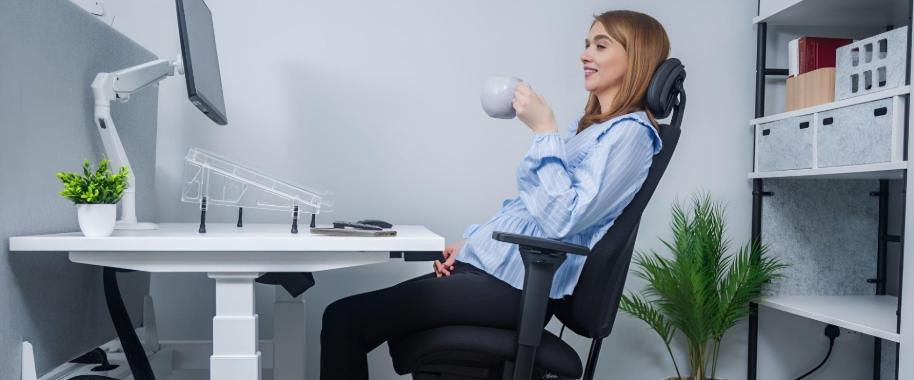
How Long Does It Take To Get Used To An Ergonomic Chair?
When you start using an ergonomic chair, there might be a small adjustment period, as your body gets used to it. This adjustment period all depends on a number of factors, such as your previous chair, posture habits, and how accurately the new chair is set up for your body.
If you had a poor quality chair before getting your new ergonomic chair, this may have caused you some pain and led to poor posture habits. With your poor posture, this would lead to more pain over time, leaving you in a bad cycle that ends up causing long-term pain from sitting.
A good ergonomic chair is designed to help improve your posture and prevent long-term back pain. It should have a number of adjustment options that allow you to mould the chair to suit your body. The big problem is that most people aren't trained on how to set up their chair, leaving them frustrated after investing a lot of money.
If you are planning on purchasing an Ergonomic Chair for your back pain, we would strongly recommend the following:
- Try out the chair in person - you need to try out the chair in person to know if it will be the right fit for you.,
- Talk To An Expert - You need to chat to a consultant that knows the chair inside and out. Ideally this expert should know the chair, have experience in a health-related field, and should focus on offering the solution that fits your needs (not trying to sell you an expensive chair that doesn't work).
FREE Ergonomic Chair Set Up
KOS Ergonomics offers a FREE chair set up, from a trained expert on all of our Back Care Ergonomic Chairs.
All of our chairs below come with FREE Delivery & FREE Set-Up!
Even better, you can try them all for FREE in our Showrooms!
How To Set Up Your Ergonomic Chair -
6 Tips To Fix Back Pain From Your Office Chair
When it comes to setting up your office chair correctly, it’s first recommended to take some time to get familiar with all the levers and adjustments on the chair, as these can vary depending on the chair.
The following steps should then be taken in order, which allows the user to apply the same process to any chair in workspaces where hotdesking may be common.
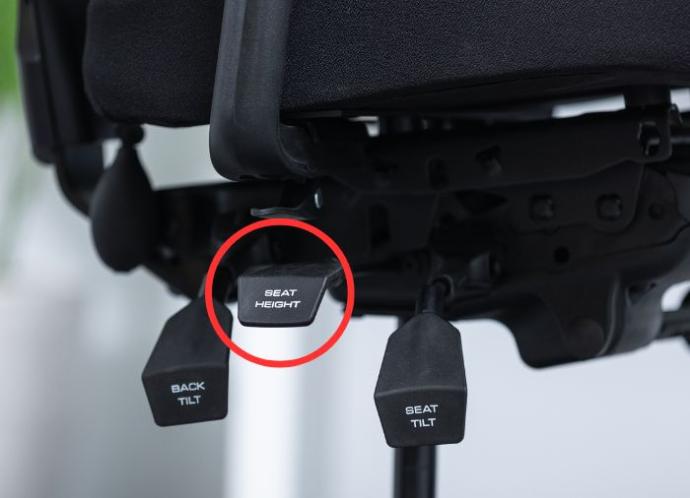
Step 1 - Adjust Your Chair's Height
The first step is to adjust the chair height, which should allow the user to be seated comfortably in the chair with their feet firmly on the ground and their thighs slightly above the level of the knees.
When the chair height is correct the user is in a better position to use the full back support of the chair.
Step 2 - Adjust Your Chair's Seat Depth
The next adjustment to make is the seat depth.
With this adjustment the seat pan (the part you sit on) should slide towards or away from the back of the chair. The user will know it’s at the right depth once they have 2-4 fingers worth of space between the back of their knee and the front of the seat pan.
This adjustment reduces any pressure to the back of the knees and thighs, while still allowing the user to feel fully supported.
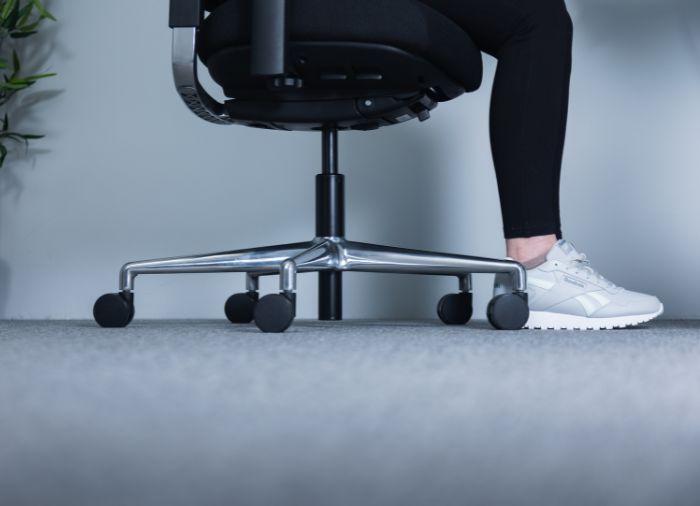
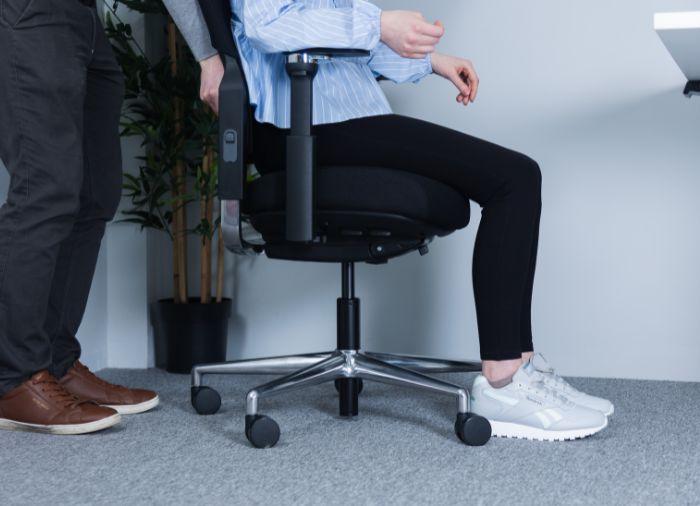
Step 3 - Adjust Your Chair's Backrest
The backrest height should also be adjustable to allow maximum support of the lumbar spine.
Move the backrest up or down until its support matches the natural curve of your spine.
Step 4 - Reclining In Your Chair
A suitable ergonomic chair should also allow the user to adjust the tilt of the chairs backrest.
Sitting at a slightly reclined angle can relieve pressure from under the thighs and allow a more open hip angle, reducing strain on the lower back.
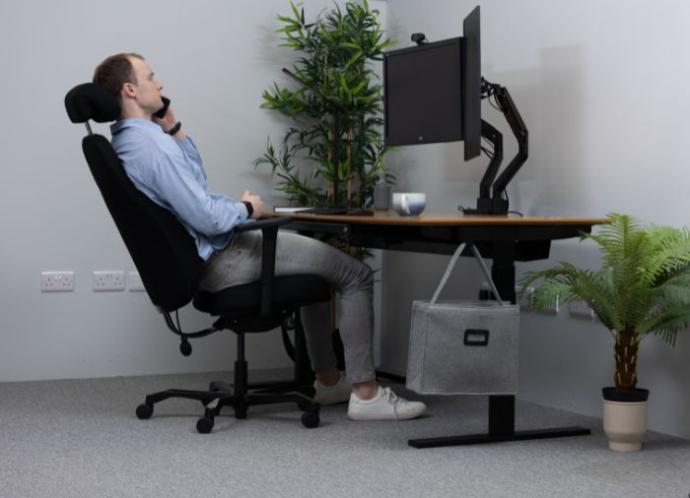

Step 5 - Adjust Your Chair's Armrests
The next step is the armrest adjustment, which is vital for proper support.
The user should have their arms resting at their side and their elbows at 90 degrees, as if typing.
The armrests should be adjusted so the elbows can rest on them in this position while keeping the shoulders supported but relaxed. This helps prevent the user leaning forward into a rounded position and prevents strain in the shoulders and neck.
Step 6 - Align Your Armrests With Your Desk
Finally, the user should check that they can sit at the desk comfortably with their legs underneath.
The surface of the desk should be exactly level with the surface of the armrests. In an ideal world all offices would have height adjustable desks, and in this case, the desk surface should be adjusted to match the armrest surface.
However, if the desk is not height adjustable, we must then adjust the height of the chair, so the armrests are level with the desk. If the feet are no longer planted firmly on the floor, a footrest should be provided.
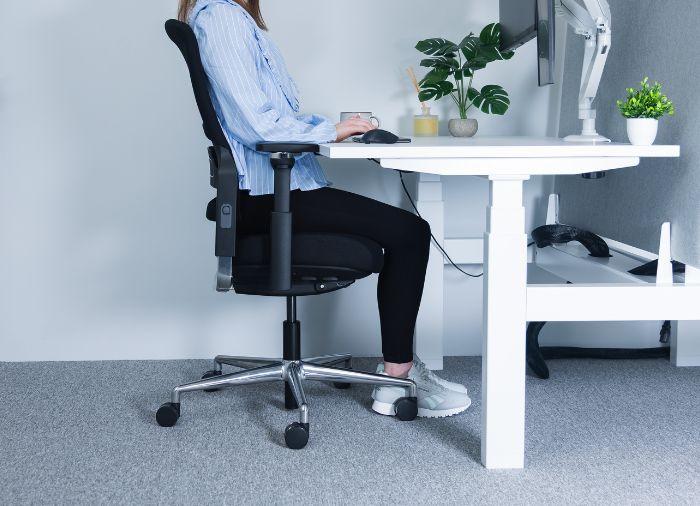
Fixing Back Pain With Your Office Chair
It is hoped that with these adjustments most individuals will experience improvements in any back pain that they’re experiencing at work, as typically it is poor posture which causes this pain.
However, it can be the case that a chair is just not supportive enough for a user, even with the necessary adjustments made.
The easiest way for an office worker to identify the right chair for them is by letting the main ergonomic principles guide them in the decision-making process.
- Firstly, the chair should be adequately adjustable in seat height and depth, back height and tilt, and armrest height and depth. This adjustability allows the user to achieve maximum support and comfort.
- Additionally, the chair should have adequate adjustable back support which should match the natural curve of the user’s spine, maintaining the spines neutral alignment. The chair should also have a sturdy base for stability and smooth mobility for easy movement. This allows access to the full workstation while avoiding strain and excessive twisting.
- As well as this, investing in a chair made from durable, good quality materials will ensure long lasting support and comfort. Lastly, when choosing a chair users should be aware of their own ergonomic needs.
- This includes factors such as height, weight, and any musculoskeletal issues. For example, larger individuals may need a chair with a wider seat pan and better cushioning, while those with lower back pain will likely need a chair with more significant lumbar support. The user must first understand their individual needs and allow this to guide them in choosing the right chair for them.
Making Sure Your Ergonomic Chair Is Comfortable!
It is clear that when a chair is not a match with a person’s physical requirements, it will often lead to pain or strain in some area. Some common examples include the chair being too deep, where shorter users may struggle to sit back fully while keeping their feet flat on the floor, causing slouching and pressure on the lower back.
It is also common to see armrests being non-adjustable, leading to the users’ shoulders being raised, creating tension and fatigue across the neck and shoulders.
Additionally, if a chairs padding is insufficient for the user, this can lead to pressure points at the hips and tailbone. These are merely examples of what can happen when a chair is not suitable for the user, highlighting the importance of choosing the correct chair. By making the investment in the right chair, you are investing in your long-term health and wellbeing by reducing your chances of experiencing musculoskeletal issues in the future.
If you are an office user looking to invest in your future health, KOS ergonomics provide a wide range of ergonomic back care chairs to suit your individual needs.
The ergonomic experts at KOS will also provide you with a free chair set up to ensure that every time you work, you are working in the best position possible.
Our Ergo Experts have helped over
40,000+ Back Pain Sufferers
In Ireland!
Now It's Your Turn To Work Better.
Get free advice on why your chair is causing you pain!

